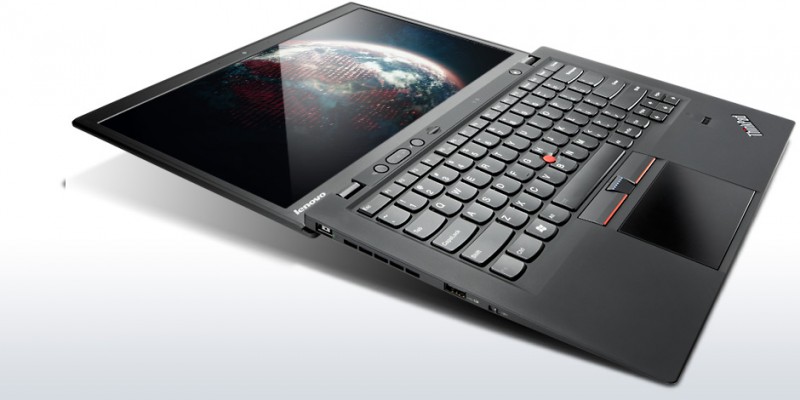Performance
The X1 comes in multiple flavors: a 2 Ghz Core i7, a 1.8 Ghz core i5, or a 1.7 Ghz Core i5. My review unit is the 1.8, loaded with 4 GB of RAM. While I didn’t run any specific benchmarks, the day-to-day performance is impressive enough. Frankly, unless you’re running high-end CAD software, I can’t think of a reason why you should have any issues with this machine.

Although why you’d do CAD on a 14″ Ultrabook is beyond me.
[Photo Courtesy EnSuite Press Release]
One thing I should note is that the wireless antenna/card on the X1 worked like a champ. I have a few areas in my house where other devices get poor connectivity, but the X1 never loses the signal. Even without putting a 3G data SIM in the slot, this is great for a traveler simply for how well it latches on to WiFi.

No idea where you might go to find free WiFi
Lenovo rates the X1 at a little over six and half hours of battery life. This is consistent for my experience too. I’m also more than a little pleased with how rapidly the X1 woke up from sleep and booted up. Lenovo has put some rapid charge tech on here, and I’m happy to say it works well. Although, with the great standby times on the X1, I can go an average of two days without charging it back up. When I do have to charge the device, I’m not tethered long. A device like this is simply not meant to be chained down.
To be fair, the battery and boot are helped along by the SSD drive in the X1. Available in up to 256 GB, you’ve got plenty of room for the average user, on a snappy solid-state disk. One caveat though — Lenovo’s recovery image takes up a good 14 GB. Sure, it’s on a separate partition, but that’s coming out of the total storage calculation.
The Strengths
You simply can’t review a ThinkPad without lavishing praise on the keyboard. While there have been some recent changes, Lenovo continues to show that real thought has been put into how most of us interact with computers. I’m a clumsy typist on most laptop keyboards, and especially on the chiclet sort. I do a bit better with Apple’s keyboards, because I’m used to them from my MacBook. The ThinkPad X1 Carbon is even better for my accuracy, to the point that it may be a legitimate expense for me to go out and purchase a laptop with this keyboard, if only for my editor’s sake.

If I make one more typo, he may have to go to the ER.
Lenovo’s Trackpoint pointing device in the center of the keyboard is hit-or-miss; some people love it and some people hate it. For me, it means never having to take my hands out of the QWERTY position, so I’m a big fan. However, the all-glass, larger than average trackpad on the bottom of the device makes me want to change my habits. Lenovo’s implementation of multi-touch on the trackpad is well done, and the tactile feedback can only be described as simply satisfying.
The Weaknesses
Lenovo can’t help filling up otherwise great machines with “value added” software. I get why this is done — partnership deals and whatnot — but understanding doesn’t make it less annoying.
The base model starts at $1,250. At the rate new modern hardware models come out, that price feels like a large investment at first, and I’d normally make a claim about sticker shock. However, now that we’re two days out from Apple’s most recent event and the 13″ MacBook Pro with Retina display, I’ll eat those words. The 13″ MBP costs $1,700. A traditional MacBook pro may start at $1200, but the Retina display model is more comparable to the X1. There are some cheaper Ultrabooks out there, but Lenovo isn’t competing with those devices. The x1 is a high-end machine clearly targeted at high-end buyers who go for products like the MacBook Pro. In that context, considering the features of the X1, you should at least be able to avoid buyer’s remorse for a year or so.
Wrap Up
Light, stylish, full featured, powerful, user friendly. This is what an Ultrabook should be. The Lenovo X1 manages to make good on that feature-set without any major hardware flaws. Lenovo’s X line was the only real competition for the MacBook Air back in the day and that absolutely continues now. My only caveat to a buyer is that If Lenovo’s early Ultrabook is this good, I wonder how good the next revision will be.


Comments are closed.